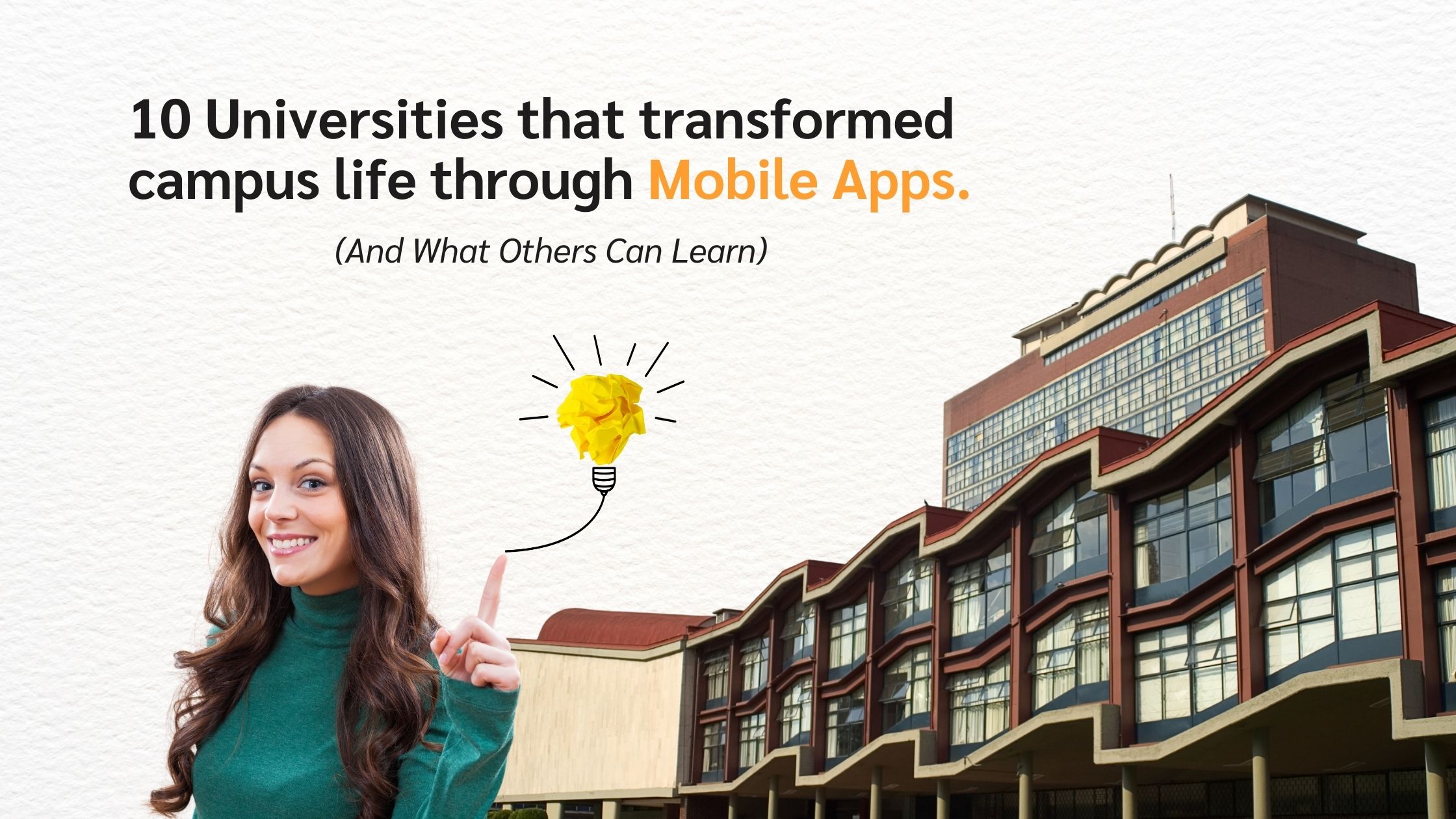Discover student orientation insights, tips, and strategies from experts
Guide to effective student orientations
Download the eBook




In 2025, mobile is the daily interface for students: from admissions to graduation, campuses are reinventing how they communicate, engage and support learners via smartphones. A well-designed, university-branded mobile app ecosystem isn’t just a convenience- it’s becoming the backbone of campus experience, retention strategy and operational efficiency.
Below are ten institutions that adopted mobile platforms and achieved measurable impact. Each case offers a lesson worth noting for any university planning its mobile journey.
The University of Texas at Austin (UT Austin) partnered with the platform Unifyed to launch a mobile-engagement ecosystem that linked student information system data, LMS, event/news modules and push-notifications. According to a UT Austin case study, the app enabled students to access grades, schedules, holds, transcripts and courses via one authenticated login.
Lesson: The value lies in integrated workflows, not separate apps. When students no longer need multiple logins, adoption rises.
American University implemented a mobile event-and-campus app through Guidebook. Their case study reports improved attendance at freshman and campus events, reduced reliance on printed schedules, and personalised experiences for user groups (veterans, graduate students, undergrads).
Lesson: Mobile apps that offer customised content based on user profile can boost engagement dramatically.
The University of Melbourne launched a mobile app (Student Life / myUniLife) developed with partner Wipro Ltd, aimed at onboarding and engagement of new students across multiple campuses. The app consolidated enrolment, schedule, and student-services workflows.
Lesson: A mobile app becomes a brand pillar when it reflects institutional identity and delivers core student-services seamlessly.
Taylor’s University adopted a modular mobile ecosystem linking admissions, attendance, student life and services. The result: fewer service-desk tickets and improved student satisfaction (as reported via internal outcomes).
Lesson: A mobile platform that covers the full student lifecycle reduces administrative friction and enhances student experience.
The University of Birmingham used mobile notifications and analytics to identify students at risk of disengagement (e.g., missing classes) and implemented early-intervention campaigns. Internal studies with student surveys and data modelling demonstrate improvement in retention.
Lesson: Mobile apps serve not just services but strategic student-success interventions notifications + data = retention lift.
ASU’s “ASU Mobile” app integrates elements like transit tracking, portal access, LMS links and student-services. During the pivot to hybrid/online learning, mobile usage spiked and helped sustain engagement across modalities.
Lesson: Mobile-first platforms provide resilience. They support campus experience in both in-person and remote contexts.
The University of Glasgow built a “Well-being Hub” inside its mobile student app, providing mental-health resources, bookings for counselling and peer-network forums. A majority of first-year students accessed it in their first semester.
Lesson: The mobile app can extend beyond academics, linking student wellness, community and support into the same ecosystem.
Monash’s “my.Monash” app serves campuses across Australia and Malaysia, offering multilingual interfaces and mobile services for a highly international student body. This boosted adoption among non-domestic students.
Lesson: When universities serve diverse cohorts, mobile apps must accommodate language, culture and location else they’ll under-perform.
The ten universities above didn’t adopt mobile apps because mobile was trendy- they changed what campus engagement meant in a mobile-first era. The results: higher adoption, streamlined operations, stronger student experience and measurable outcomes.
For institutions ready to take the next step, partnering with a specialist like GR Tech through their Education Mobile App Services can help build a mobile ecosystem tailored to that vision: modular, integrated, localized, and built for the student lifecycle.
If your university is evaluating a mobile app project, use these cases as reference then ask: Does our app link across systems? Does it reflect our brand? Does it support everyday student needs? And can we measure its impact?
When the mobile app becomes the hub of campus life, the institution doesn’t just digitize: it transforms.